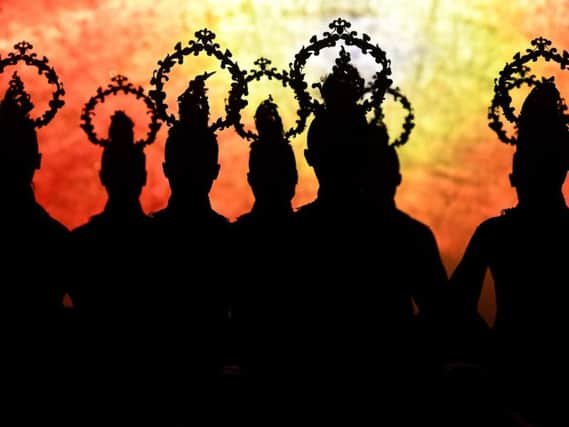Edinburgh Festivals 2019: Ballet reborn in oriental colours


Each time her hands go near her face, you fear the impossibly long fingernails will take an eye out. “Don’t worry,” she says, “I’ve been wearing them a long time.”
Decades, in fact, ever since Yang became known across her native China for performing the Dai peacock dance. So popular was it, that she named her company after it – Peacock Contemporary Dance – because even though Yang’s style is modern, the inspiration for everything she creates lies in her heritage.
Advertisement
Hide AdYang is in London for the UK premiere of Rite of Spring which, much like her outfit, is a coming together of old and new. Her previous production, Under Siege, was a big hit at Sadler’s Wells and she’s hoping to repeat that success. The strains of Stravinsky’s iconic score can be heard from the nearby stage, but sitting in her dressing room, 60-year-old Yang isn’t wearing her costume to perform. The punishing choreography of her latest work would challenge even a young body – the dress and nails are for a photo-shoot, and the curtain call later that evening.
world in their homeland and nearby Tibet.
“There are many versions of Rite of Spring and it has a long history,” says Yang.
“But my version came from my personal life. I grew up in Yunnan Province in China, and although Rite of Spring is from Russia, we have a very similar thing where I come from.
“When spring arrives, there is a ceremony for the harvest, and in my village we celebrated everything with a dance.”
It was during those early days in the village that Yang discovered she had an aptitude for movement. Joining a nearby company aged 11, where young children could dance and be educated at the same time, she began experimenting not just with performance, but choreography.
“My background is quite different from most other dancers, because I’ve never received any official education in dance,” says Yang. “I danced as a child in my village, where we were inspired by everything surrounding us – our bodies, the trees. We would look around us and think ‘if a flower is like this, I’ll try to be like the flower’.
Advertisement
Hide Ad“So from a very young age I would start to make up bits of dance. And then I just thought that if I have been given this talent or gift, I should try and develop it.”
Each “goddess” wears a bright coloured costume, and represents a different “Tara” in Buddhist belief – power, wealth, peace, anger and so on. Behind them, a vast golden bowl looms over them, and wooden-style Chinese characters litter the stage.
Advertisement
Hide Ad“It’s like the goddesses are on duty, they have to take care of the different matters of mankind,” explains Yip of his designs.
“Each one is symbolic and every colour says something. It’s different from the Rite of Spring productions we have seen in the Western world, because Yang wanted to take it in a different direction.
“The main thing we did was to include oriental religious philosophy into the show. And in oriental philosophy, people always put themselves into non-human forms – they feel the wind, water, nature and they disappear themselves and become something else.”
The golden bowl, says Yip, is to represent Buddhist temples, which are usually adorned with gold figures and décor: “I didn’t want to put an actual temple on stage, that would be too complicated, I wanted it to be more symbolic.”
All of which adds up to a visually striking show, right from the start. Sitting on stage motionless with their large headdress in place, while the audience takes its seat, the twelve dancers exhibit extraordinary stillness and patience. Casting them was an important challenge for Yang.
“I wanted the dancers to fit into the show, to develop themselves and be immersed in it,” she says. “It’s easy for dancers to be dancing, it’s far more difficult for them to sit still. And they sit for such a long time, so that was the first training the dancers had to do for this production – they had to fit into their characters and look for something in their minds and hearts.”
Rite of Spring, Edinburgh Festival Theatre, until 24 August